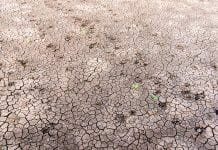
Robotics in agriculture are rapidly developing. Government Europa looks at how technology is revolutionising the asparagus farming industry.
Robotics in farming and agriculture are allowing European farmers to work in a safer environment, increasing yield and helping to develop more sustainable farming, in asparagus farming and other sectors. The UN predicts that the world population will rise from 7.3 billion today to 9.7 billion in 2050 – putting more pressure on farmers to develop new strategies throughout an industry where supply is struggling to meet demand. Europe is beginning to notice the benefits of smart farming when it comes to closing the supply chain gap.
Robots are part of an overall push for greater precision and sustainability within farming. Smart farming has evolved using data-based technology such as satellite positioning systems, remote sensing, and the internet. The main uses for robots and Information Communication Technology (ICT) in farming include:
- Harvesting and picking;
- Weed control;
- Autonomous mowing, pruning, seeding, spraying and thinning, and;
- Sorting and packing.
Robots are more commonly used for harvesting and picking as it allows for greater speed and accuracy. Within the asparagus farming industry, researchers are increasingly creating and developing new machinery to eventually lower the cost of asparagus to consumers, increase yield, and hopefully bring more young farmers back into to the industry.
Farming is a notoriously hard, dirty job and young people are being put off by the thought of consecutive 12-hour days and intense manual labour. It has been speculated that the new high-tech nature of farming could attract younger people back into the industry.
Robots used in asparagus farming
When it comes to asparagus, farmers are taking smart farming and robotics very seriously and are considering options that will make it more sustainable. Naturally, asparagus farming can be a very time-consuming job, with workers having to manually cut the asparagus out of the ground, at exactly the right times. Robotics are now being developed to do this element of the process in replacement of manual labour.
Asparagus farms have high start-up costs, as it can usually take two to three years for the crop to initially grow. However, after the first cut, asparagus will shoot up every spring for up to 25 years. Asparagus needs to be picked once it reaches a certain height, usually around eight inches, meaning this process favours manual labour – where the farmer can observe and leave the smaller, younger stalks. The crop releases an enzyme once it has matured, which spurs the production of further stalks to grow. Therefore, if they are cut too early, they will not produce the enzyme and the plant will die. Once the asparagus starts to have foliage, they are too tough for eating, making timing extremely important.
The process of picking asparagus originally seemed too complex for machinery. However, through the EU-funded, ECHORD++ project, technology in asparagus farming is starting to progress and the project has released trials on a robotic system for selective green asparagus farming. The harvesting machine is built with a camera, viewing the asparagus, and two harvesting tools, which work like scissors. The aim of the machine is to increase harvesting productivity by vision-driven multi-tool harvesting mechanisms. The camera is able to reliably and robustly recognise how tall the stalks are in order to distinguish between harvesting ready asparagus, and leaving ones which are not. This is achieved by using a colour image as well as a depth image, with the images being combined by a vision module into a point cloud which gives the machine information about stalk positions, including that of the size of each individual stalk.
Sparter
Machines like this are not commercially available yet, however, there is one machine, called Sparter, which was released to a French farmer this year.
White asparagus is grown underground, limiting the sunlight which it receives and therefore preventing chlorophyll production. The Sparter robot can detect underground asparagus, cut them, replace the plastic and repair the sand bed. It can produce higher yields and reduce the likelihood of violet discolouration. The machine currently only works for sub-surface asparagus farming, but the company behind the robot says that it could potentially be used for crops which grow above ground, once more research and tests have taken place.
With asparagus farming being seasonal and needing a larger workforce at certain times of the year, farmers are increasingly struggling to find people to work, and this is the same with many other seasonal fruits and vegetables, for example, strawberries. Developing selective harvesting robots can help to overcome this issue, particularly in the UK, as once Britain leaves the European Union it will be even more difficult to source people willing to work in this sector due to potential difficulties regarding the ability (and expense) of people crossing borders for work.
The Internet of Things
There is also new advancement into Internet of Things (IoT) sensors being used in asparagus farming. In particular, these sensors can improve the quality of asparagus by aiding farmers to make the right decisions when growing their crops. For white asparagus, growing underground, the temperature of the bed which it is growing in is important to the quality of the asparagus itself. Farmers typically use a two-sided foil cover to control the temperature of the bed; one side is black, and the alternative side is white. The black side draws sunlight in, increasing the heat of the asparagus bed, whereas the white side reflects sunlight away from the bed, in turn cooling the temperature underground.
Usually, farmers would have to manually check the underground temperature every day. However, sensors have recently been developed that can be installed into the beds which take readings at different levels of the bed frequently throughout the day and store the data in a cloud which is accessible all day. This allows the asparagus farmer to make the right decision regarding which side of the foil is needed to optimise the quality and growing of their asparagus.
Other ways that technology can be used to benefit European farmers
There are other forms of robotics and smart technologies which are being adopted by farmers, and drones are becoming increasingly popular as research into their use on farmland has taken off. Arable farmers make use of both aerial and ground-based drones, with one of the main benefits to farmers being their ability to help in soil and field analysis as they can produce 3-D maps for early soil analysis, which are useful when it comes to planning seed planting patterns and for providing data regarding irrigation and nitrogen-level management.
Drones with hyperspectral, multispectral or thermal sensors can be used to identify where the fields are dry, for example. Using this technology allows farmers to know exactly what is going on with their crops and the exact places which need re-evaluating. Drone technology has also allowed farmers to scan the ground and spray the correct amount of fertiliser/liquid accordingly. Experts have estimated that crop spraying by drone technology is five times faster than traditional machinery and it is believed that machines such as these can reduce the amount of herbicides and pesticides used on crops.
Modernising agriculture with machines like this can also benefit the environment, as agricultural air pollution is mainly in the form of ammonia, which comes from gases from livestock but also from fertilisation using products which are likely to be prone to volatilisation. According to the EU’s Agricultural Outlook 2017, emissions from agriculture are set to decrease by 10% by 2030, and this is believed to be because of the development of technology which can reduce the use and improve the efficiency of inputs, such as fertiliser. It has been predicted that drones, equipped with red, green, blue (RGB) or multispectral cameras will be able to identify where there is a pest or a problem, and this could reduce the amount of pesticides used as it will allow farmers to spot crop enemies earlier, allowing for more precise chemical application.
For asparagus farming, drones can be used in the planting process by shooting pods with seeds and plant nutrients into the soil; drone-planting systems can achieve an uptake rate of 75% and can also decrease planting costs by 85%. Drones aren’t just useful in arable farming: the thermal imagery can be used to monitor livestock and to ascertain where there are any animals missing or injured, or if there are any birthing animals in need of assistance.
Technology for dairy farmers
Beyond asparagus farming, technology is also being put to good use by dairy farmers – robotic milking machines are becoming very popular and can benefit both the farmer and the cow. The robotic machines milk the cows themselves, meaning human input is low. The cows can take themselves into the robot’s holding areas whenever they feel the need to. The machine identifies them via their tags and if the cow hasn’t been milked too recently, the machine will brush and clean the cows udders, before a laser finds the exact position to clamp the milk pumps. The technology inside the machine means that the pump can also adjust its grip to make it as gentle as possible for the cows.
Using this technology, cows can be milked twice as often during the day as opposed to if a farmer were to do the process manually, meaning that not only does this result in higher milk yields, but it can also be much kinder on the cow, allowing them to relieve the pressure of milk in their udders.
With fewer young people entering the industry and the demand for labour higher than supply, robotic machines like this are helping to meet these challenges. The concept that the machines require less, manual labour could also be a catalyst in encouraging young farmers to stay on farms and take up a career in farming.
The European Commission is looking to improve current issues with technology in agriculture
Many farmers in the UK and across Europe still have relatively slow broadband speeds if they are living in rural areas. This is posing an issue for technology in farming, as most smart farming machines require broadband for internet technology to work. The EU currently has a target of ensuring that every company and household has broadband access at a speed of 30 MB/s by 2020, however, until this is achieved, rural farmers across Europe will struggle to benefit from technology in farming.
In 2017, a report was released by ‘Cable’ stating that the UK has one of the worst broadband speeds at 16.5 MB/s. This means that British farmers would suffer when it comes to using internet technology on their farms. The UK’s broadband speeds fall below 19 European countries, 17 of which are in the EU.
In a survey by the National Farmers Union (NFU), 70% of British farmers who have smart phones, have no access to 4G at all, with more than 90% agreeing that having a reliable signal was important for their businesses. Following on from these statistics, it was also revealed that 80% of the farmers in the survey had an upload speed of 2 MB/s or less. These broadband speeds in the UK mean that farmers cannot make full use of the available range of agricultural technology, which seems to be a recurring theme throughout the whole of Europe.
The CAP
It is estimated that only 8% of EU farmers are under the age of 35, and so the ageing population will need more policies in place to support farmers in accessing digital technologies and training to be able to use them. The EU’s Common Agricultural Policy (CAP) has expressed ideas around the concept of ‘digital’ or ‘precision’ farming for the next period of 2021-2027 and this may therefore play an important role in smart farming in the near future.
In a release by the European Commission in June 2018, it was outlined that ‘greater use of knowledge and innovation’ would be a key concept when considering ways to modernise the CAP for the next term. The commission has put aside a €10 billion budget from the Horizon Europe research programme for research and innovation projects in food, agriculture, rural development and the bioeconomy. This sum of money will hopefully bring more technology into agriculture and will aid in reducing the issues that currently face the industry. The commission stated in the release that they will be hoping to extend broadband access in rural regions, with a hope to contribute to the competitiveness of European agricultural production.
In a speech at the EPP Group External Bureau Meeting on Innovation in Agriculture, European Commissioner for Agriculture and Rural Development, Phil Hogan, stated: “A key obstacle to achieving our goals lies in the so-called ‘digital divide’ whereby farmers and rural areas lag behind their urban neighbours in relation to connectivity and modern technologies. Bridging the digital divide is one of the most fundamental challenges facing agriculture and rural areas today, and policymakers everywhere need to do more to help build that bridge.”
Hogan proceeded to say that: “We have already made real progress in creating the right enabling conditions for improved agricultural innovation, but we need to do more, and faster.”
It is from these speculations that the commission has approached a focus on innovative farming and technology in agriculture in the CAP.


















